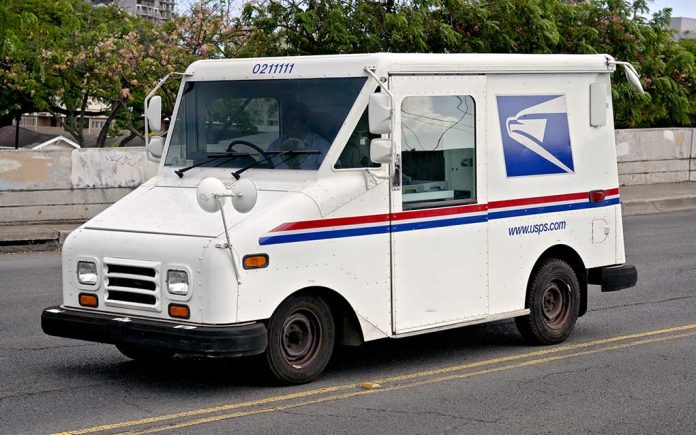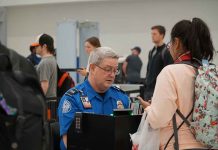
The U.S. Postal Service is rolling out a massive cost-cutting strategy aimed at reducing annual expenses by $3 billion starting in 2025, but the proposal has raised concerns about its potential impact on service reliability.
At a Glance
- The U.S. Postal Service is pausing consolidation of mail processing operations until January 1, 2025.
- Concerns about impact on delivery reliability prompted the pause.
- Plan aims to save $3 billion annually through reduced trips between plants and post offices.
- Estimated $30 billion in cost savings over the next decade.
- USPS to hold virtual public hearing on September 5 for feedback.
USPS Strategy to Slash Costs
The U.S. Postal Service (USPS) has introduced a new comprehensive strategy to cut costs significantly by 2025. This plan includes reducing delivery days, closing less profitable branches, and increasing automation. These measures are expected to transform operations, address financial struggles, and maintain quality service.
Postmaster General Louis DeJoy announced a pause in the consolidation of mail processing operations until at least January 1, 2025. This move came as a response to lawmakers’ concerns about how these changes might affect delivery reliability.
This pause is part of a series of steps under the Postal Service’s 10-year “Delivering for America” plan aimed at improving financial health with savings projected between $133 million and $177 million annually.
Consolidation and Financial Efforts
Despite pausing consolidation initiatives, USPS is moving ahead with other aspects of its cost-reduction strategy. Postmaster General Louis DeJoy conveyed this development in a letter to Sen. Gary Peters, ensuring that the halt in consolidation reflects an effort to consider the implications thoroughly.
“Throughout this journey, we recognize that there have been impacts to our customers, especially in regions like Atlanta, Houston, and Richmond,” DeJoy said. “We apologize for these conditions and are working hard and know that we will soon be delivering the service the American people deserve.”
USPS’s strategy includes closing some post offices, reducing service hours, implementing new sorting machines, and hiring temporary employees to manage costs. This multi-faceted approach aims to modernize operations and reduce expenses while attempting to maintain expected levels of service quality.
The USPS is working to optimize its ground transportation network but said it would pause changes ahead of the peak shopping season. The Postmaster General is not backing down from his plan to transform the Postal Service.https://t.co/Vn2zjeutwZ
— EcommerceBytes (@EcommerceBytes) May 22, 2024
Impact of Global Inflation and Operational Changes
Global inflation since 2022 has significantly impacted postal carriers and shippers, resulting in decreased volumes and lower profitability. Events such as the war in Ukraine, rising fuel prices, and the energy crisis have further compounded these challenges, hitting the Postal Service hard.
Postal operators like USPS have seen substantial declines in mail volumes. For example, USPS Priority mail volumes dropped by 42% since 2007, leading to a significant revenue shortfall in recent years.
To cover these financial gaps, USPS increased rates for various services. Priority Mail rates went up by 5.5%, Priority Mail Express by 6.6%, and First-Class Package by 7.8%. Besides hiking rates, USPS is also investing $40 billion in new delivery vehicles, network optimization, IT updates, and operational technology as part of their modernization efforts.
Future Plans and Public Feedback
Looking forward, the USPS plans to modernize its network to shift from a letter-based infrastructure to one that can adequately handle package deliveries, reflecting changing customer needs. These steps are projected to yield $3 billion in annual savings by reducing trips between mail processing plants and post offices. Additionally, these efforts aim to minimize carbon emissions and lower transportation costs.
“The proposed operational changes will modernize our ground transportation network to reflect changing customer needs, reduce costs to become financially self-sufficient, and provide more predictable and reliable service,” USPS stated in a recent press release.
However, due to ongoing discussions and feedback from stakeholders, USPS will conduct a virtual public hearing on September 5 to discuss these planned changes. Public feedback will be crucial in shaping the future of these efforts, particularly concerning the impact on mail-in ballots and overall delivery times.
















